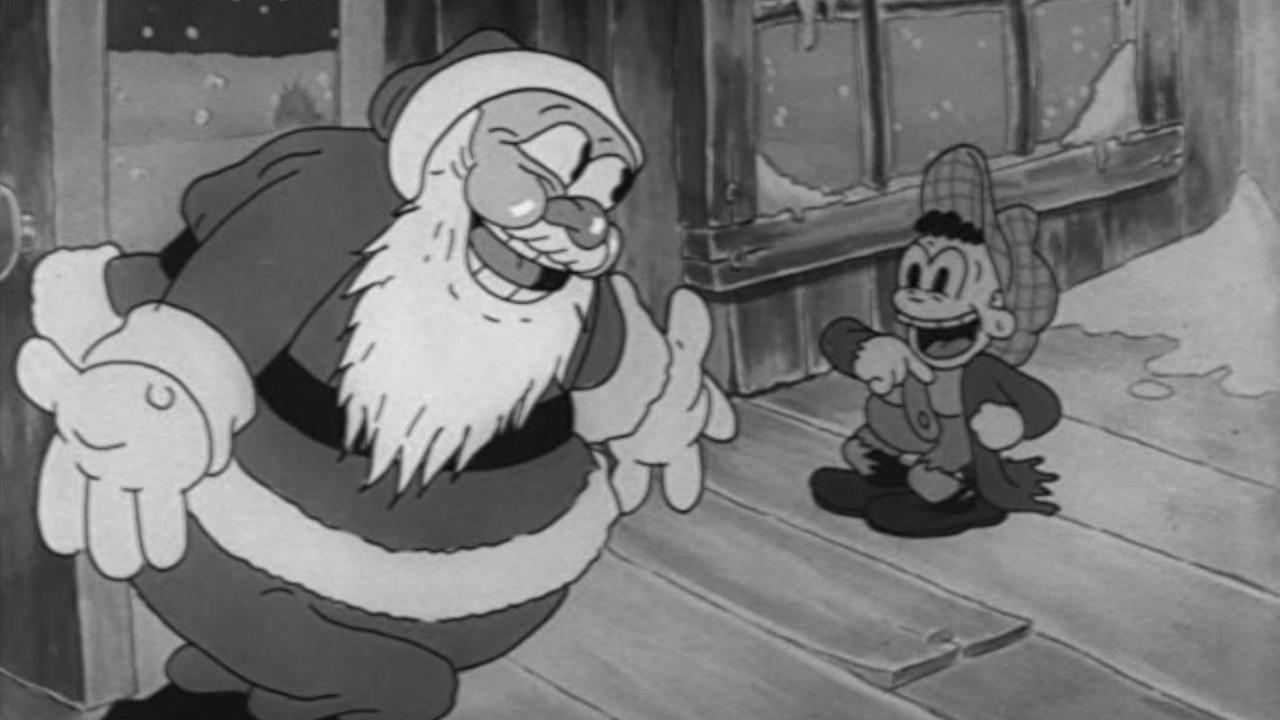


Good concept, poorly executed.
... View MoreExcellent, a Must See
... View MoreThere is, somehow, an interesting story here, as well as some good acting. There are also some good scenes
... View MoreThe storyline feels a little thin and moth-eaten in parts but this sequel is plenty of fun.
... View More. . . Warner Bros.' warning division of Animated Shorts Seers (aka, their Looney Tunes prognosticators) were WITTING prophets of the upcoming Calamities, Catastrophes, Cataclysms, and Apocalypti facing We Americans of (the then) Far Future, or rather were receiving their Cassandra-like Revelations in a trance-like state of Mass Psychosis. When one examines THE SHANTY WHERE SANTA CLAUS LIVES for clues to answering this burning question, it's best to view SHANTY with its live-action prologue in the 8 minute, 53 second version. There we see a family of four (plus a mutt) gathered under the family Christmas Tree as Proud Pops screens SHANTY in lieu of any other Christmas presents. About six minutes later, the Yule Tree in Santa's SHANTY catches fire! It's hard to imagine a more ominous set of circumstances, especially in the midst of Holiday Season. No one in their right mind would INTENTIONALLY create such Dark Art. But think about it. The recent fire sale of America to our new American Czar the Red Commie KGB Monster Vlad "Mad Dog" Putin and his Puppet Rump occurred during the middle of a snowy Holiday Season, just as pictured by the Looney Tuners here. The orphan boy bamboozled into a Death Ride on Santa's Sleigh to a Siberian Gulag Fire Trap obviously symbolizes Czar Putin's deluded Red State Enablers, those folks guilty of conspiring to commit High Treason against America's Hallowed Constitution by activating its Racist "Electoral College" self-destruct clause for the fifth and final time (ALL FIVE crimes against Democracy perpetrated by what's now been co-opted as Putin's Deplorable Party; though America suffered mightily in the previous four instances of Racist Electoral College Meddling, this fifth outrage threatens to end us!). Certainly the weight of the evidence is that the Looney Tuners are America's Leading Oracles through Divine Intervention, rather than being conscious Futurists.
... View MoreThis is an early Warner Brothers black and white, more charming than funny. It more or less did what the studio wanted-it showcased a song from their music library. Not much was expected from the early shorts. Because I want to talk a little about the short, this is a spoiler warning: A little orphan trudges "home" to a beaten up shack, hoping to find something from "Santy Claus", only to be disappointed at finding nothing. But all is not lost, for who should come up to the door and burst into the title song? That's right-"Santy Clause", who, after doing most of the song, invites the orphan back to the North Pole for Christmas.There, we see the standard "toys come to life", with at least one caricature, of Kate Smith. There are one or two scenes featuring ethnic humor. The close of the short has the orphan saving the day by putting out a Christmas tree fire. During the Depression, there were quite a few such orphans and such an ending would have been enjoyed by audiences of the day.This short is well worth seeing at least once. Recommended.
... View MoreThis Hugh Harmon-Rudy Ising Merrie Melodies cartoon short produced by Leon Schlesinger for Warner Bros. tells the story of a poor boy who gets invited by Santa to go with him to his shanty to watch all the toys come to life. That's basically the plot of the story with some unfortunate blackface stereotypes in some scenes. Still mostly enjoyable with some entertaining musical sequences like the title song and a Kate Smith doll singing, "Shine on Harvest Moon". It was during this period that the Merrie Melodies shorts' purpose was to showcase a song that was published by the Warner Bros. publisher in each short with the showcased song's title the name of the film. That's the case here. Recommended for anyone who are Warner cartoon completists.
... View MoreThe animation is adorable and nicely done for how early this cartoon is. And the songs are catchy and fun. But there's just nothing very original or remarkable about "Shanty Where Santy Claus Lives." The plot-line is incredibly straight-forward and obvious, and even the toys are fairly predictable and behave relatively normally. A much better cartoon featuring Depression-era pathetic orphans who get a surprise visit from Santa is the 1936 "Christmas Comes But Once a Year."
... View More